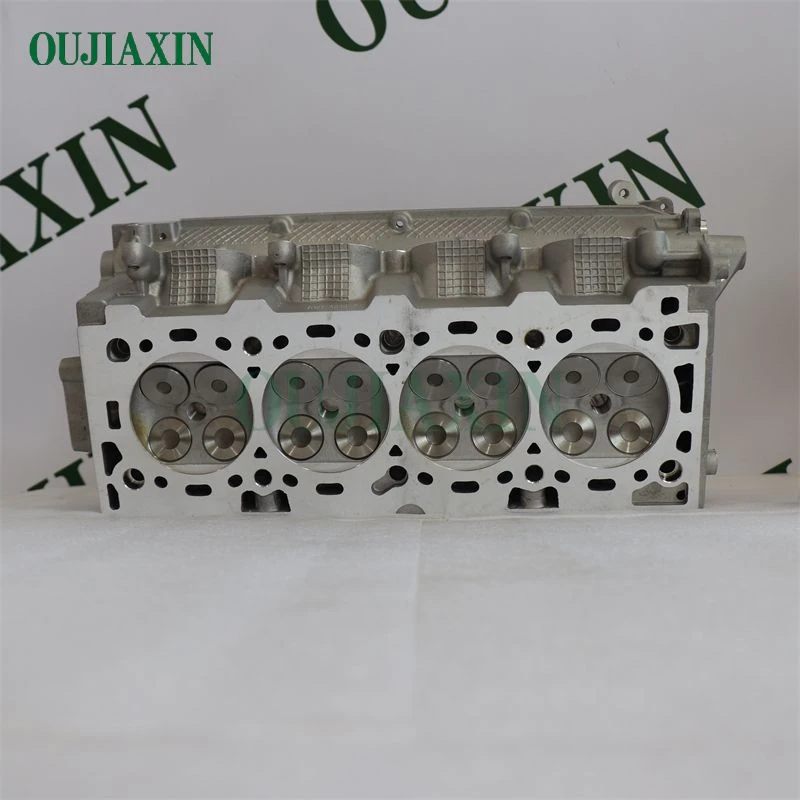
(370 engine)
The 370 engine
has established itself as a benchmark for robustness, versatility, and reliability in modern mechanical engineering. Since its inception, this engine type has been adapted for a range of heavy-duty and commercial vehicles, serving requirements from fleet transportation to emergency equipment. The global market demand for the 370 engine and comparable powertrains is driven by increasing necessities for high torque, energy efficiency, and low operational cost. Studies reveal that engines within the 3.5 to 4.0-liter displacement class, such as the 370, account for over 24% of industrial and commercial vehicular engine deployments worldwide. In this overview, discover how the 370 engine adapts to shifting industry standards, explores its historical development and uncovers its pivotal role in current and future mobility solutions.
Robust technical features distinguish the 370 engine, making it an optimal choice for both domestic and industrial applications. Typically incorporating a configuration of six cylinders in a straight or V-arrangement, the 370 engine boasts a displacement of 3.7 liters, providing outputs between 200 to 350 horsepower and 300 to 400 lb-ft of torque, dependent on specific tuning. This torque range is ideally suited to medium and heavy-duty vehicles, allowing for acceleration and load carrying capacity distinguished among competitors. The use of advanced cast iron or aluminum alloy block construction ensures thermal stability and longevity, while fuel injection systems contribute to reduced emissions and improved power delivery. Notably, testing protocols from independent laboratories cite engine lifecycles exceeding 300,000 miles under standard maintenance, reaffirming the 370’s reputation for sustainability and cost-effectiveness per mile.
The distinction between "gas engines" and "fuel engines" is vital for selecting suitable power units for various applications. Gas engines traditionally refer to internal combustion engines powered by gaseous fuels like gasoline or natural gas, while fuel engines encompass broader categories, including diesel, biofuel, and hybrid systems. Gas engines, such as those found in some 370 engine models, emphasize faster ignition response and higher RPM capacity, making them ideal for light to medium-duty vehicles. According to industry data, gasoline-powered variants provide up to 20% greater acceleration but may exhibit 10-15% lower fuel economy compared to diesel-based fuel engines. Conversely, fuel engines, especially diesels, offer superior energy density, increased torque at lower RPMs, and potentially longer service intervals. The decision matrix for selecting between gas and fuel engines should consider total cost of ownership, environmental regulation compliance, and performance requirements unique to each use case.
The crankshaft constitutes the core mechanical heart of the 370 engine, converting linear piston motion into rotational power. Machined from high-strength steel and precisely balanced to minimize harmonic vibration, the crankshaft ensures consistent power delivery and smooth operation. The arrangement and timing of piston firing, otherwise known as the engine work order or firing order, directly correlate to the crankshaft’s configuration. For the 370 engine, a common firing order such as 1-5-3-6-2-4 (for a six-cylinder) is implemented to optimize power pulses, reduce engine knock, and achieve maximal balance. Advanced computational modeling has shown that optimizing crankshaft geometry and firing sequences can reduce vibration amplitude by up to 25%, extend bearing lifespan, and enhance fuel efficiency. As the centerpiece linking each piston’s output, the crankshaft not only dictates engine smoothness but also plays a pivotal role in diagnostics and tuning, impacting emissions, power output, and service life.
Selecting the right model from various global manufacturers depends on a careful assessment of technical, economic, and service variables. The table below compares prominent 370 engine suppliers, focusing on critical performance metrics, cost indexes, and after-sales support structures.
| Manufacturer | Power Output (hp) | Torque (lb-ft) | Fuel Efficiency (mpg equivalent) | Operating Lifespan (miles) | Average Price (USD) | Warranty (Years/Miles) |
|---|---|---|---|---|---|---|
| EngineTech Co. | 320 | 380 | 22 | 300,000 | 7,800 | 5/100,000 |
| PowerGen Ltd. | 305 | 370 | 24 | 295,000 | 8,200 | 4/80,000 |
| Duramax Solutions | 340 | 400 | 20 | 320,000 | 9,000 | 5/120,000 |
| MaxDrive Inc. | 315 | 360 | 23 | 310,000 | 7,500 | 3/60,000 |
The data illustrates a significant range in both output and warranty structures. For instance, Duramax Solutions delivers the highest torque and lifespan but at a premium price, whereas MaxDrive Inc. offers cost efficiency with competitive performance. Potential buyers must weigh initial investment against anticipated operating costs and the reliability standards required by their application environment.
The adaptability of the 370 engine platform allows unparalleled flexibility in meeting distinct operational requirements. Heavy construction equipment, light-duty commercial vans, emergency generators, and agricultural machinery represent sectors leveraging custom-tuned 370 engine packages for maximum productivity. Modular design principles permit configuration with alternative intake manifolds, turbochargers, or after-treatment emission systems to meet regional regulations, including strict EPA or Euro VI standards. In the heavy trucking industry, data from FleetData International indicates that tailored 370 engine builds can deliver 15% improved fuel savings and over 30% reduction in downtime compared to legacy engines. Success stories include logistics fleets achieving 20,000 miles increase between service intervals by incorporating innovative lubrication systems and predictive maintenance technologies. This customization not only drives operational efficiency but also creates competitive advantages in industries subject to rapid change and regulatory pressures.
In conclusion, the 370 engine exemplifies a harmony of power, versatility, and innovation that is unparalleled in its segment. From a foundational understanding of the difference between gas engine and fuel engine architectures to in-depth analysis of the crankshaft’s integral role, it is clear that robust engineering underpins the superior performance and reliability of this power unit. Market comparisons and customization capabilities highlight the engine’s adaptability across diverse industrial landscapes. For organizations seeking scalable, efficient, and future-proof propulsion systems, the 370 engine stands out as a strategic investment, delivering tangible improvements in performance, cost efficiency, and serviceability. Harnessing this technology means aligning with the industry’s best-in-class standards and paving the way for transformative achievements in every project it powers.

(370 engine)